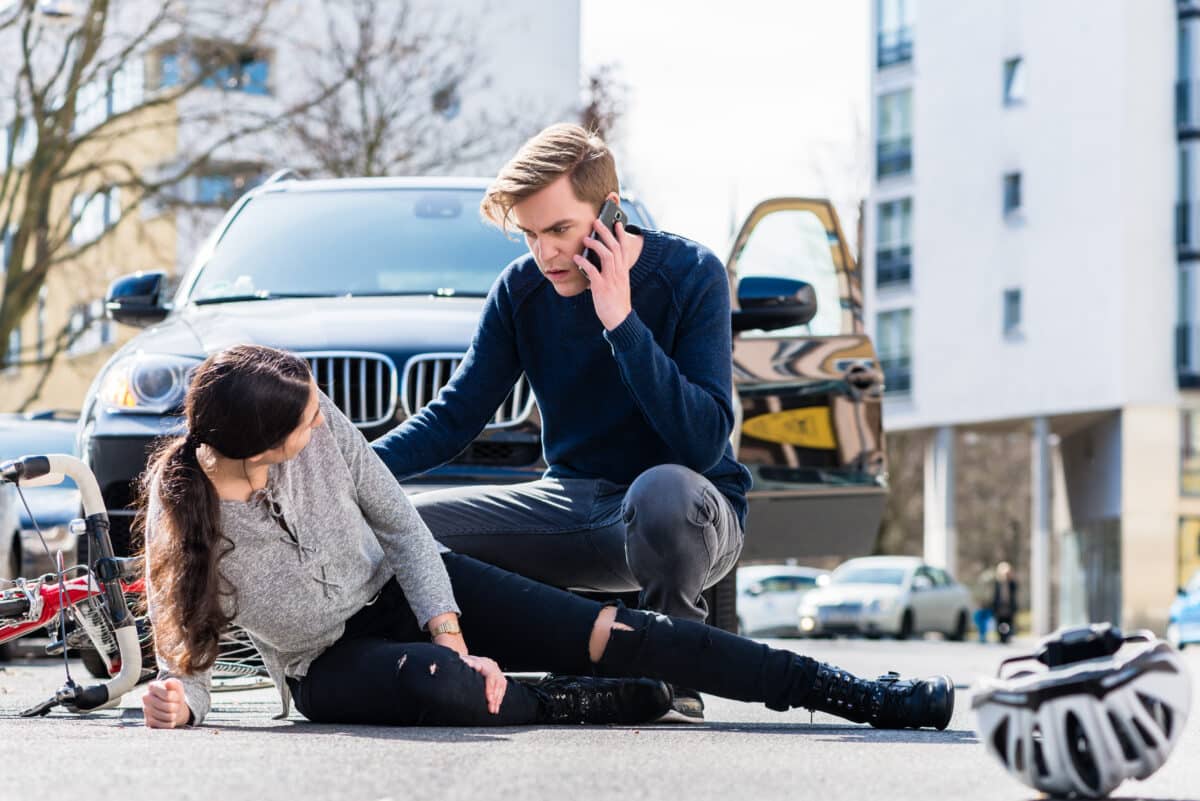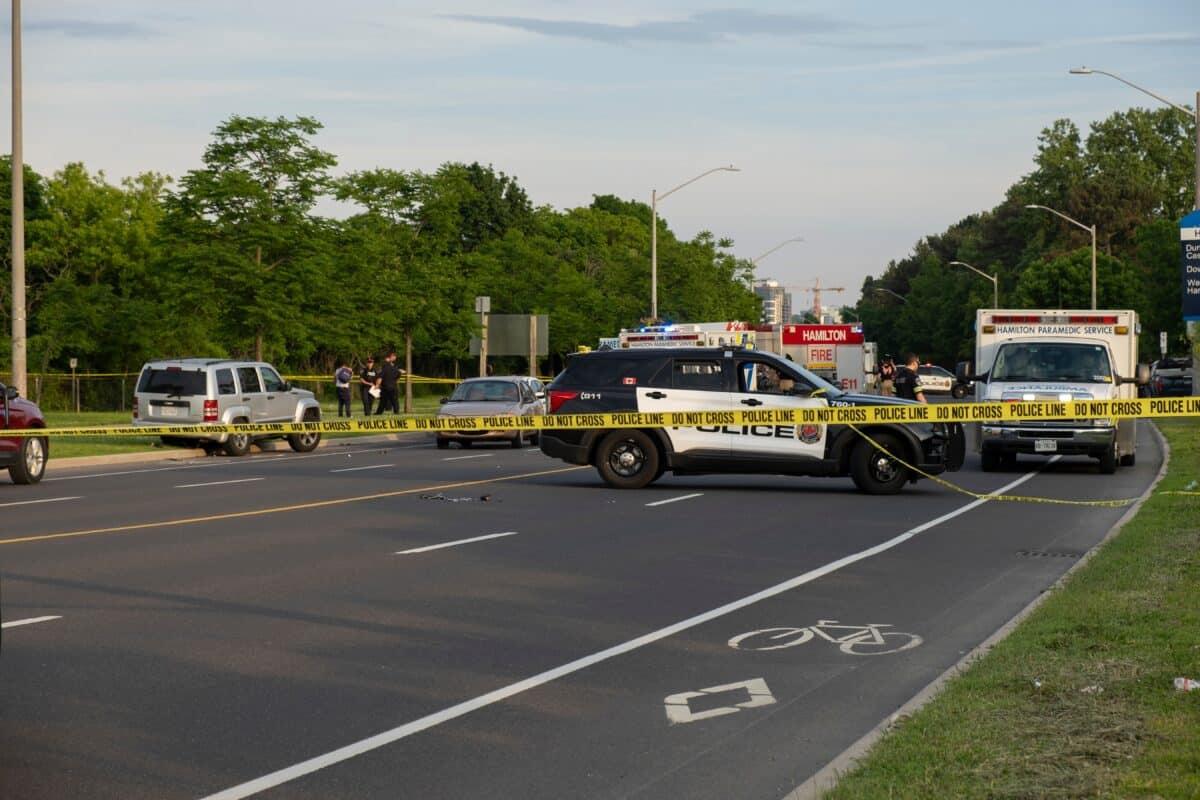
If not fatal, many SUV accidents involving pedestrians can result in serious injuries. (Kzenon/Shutterstock)
In a nutshell
- Pedestrians and cyclists are significantly more likely to be killed or seriously injured when struck by an SUV or light truck compared to a regular passenger car, with a 44% higher fatality risk overall, and an 82% higher risk for children.
- Younger children are especially vulnerable: Those aged 0–9 face a 130% increase in fatality odds when hit by an SUV versus a standard car, due to the taller, blunter front design of these vehicles striking them in the chest rather than the legs.
- Replacing SUVs with passenger cars could save hundreds of lives annually, including an estimated 620 adult and 60 child pedestrian and cyclist deaths in the U.S. alone.
LONDON — Your family SUV might be keeping you safe inside, but it’s proving deadly for those outside. A new study from researchers in London reveals that SUVs and light trucks dramatically increase the risk of death for pedestrians and cyclists in crashes, with children facing the worst odds.
The research, published in Injury Prevention, found that when hit by an SUV or light truck vehicle (LTV) instead of a regular passenger car, pedestrians and cyclists face a 44% higher chance of death. For children, that risk skyrockets to a staggering 82% increase in fatality odds.
Why SUVs Are More Deadly
SUVs now account for nearly half of all new car sales globally, a massive jump from just 15% in 2010. That explosive growth has put more high-fronted, heavier vehicles on roads worldwide, with deadly consequences for anyone not inside them.
The study, led by researchers from the London School of Hygiene & Tropical Medicine, analyzed data from 24 studies covering 682,509 crash victims. Their findings show how vehicle design directly impacts survival chances in accidents.

Why exactly are SUVs more lethal? The researchers point to their taller, blunter front ends as the key design feature increasing danger. Unlike passenger cars, which typically have lower, sloped fronts, SUVs strike pedestrians higher on their bodies, hitting an adult at the pelvis rather than legs, or striking a child at chest level rather than the pelvis.
This higher impact point changes the entire crash dynamic. Instead of being carried on the hood as often happens with passenger cars, victims hit by SUVs are more likely to be thrown forward into the road. This increases the likelihood of upper body and head injuries, which are typically more fatal.
Children at Greatest Risk
SUVs are especially dangerous for younger children. Data from two large U.S. datasets showed that children aged 0–9 years faced a 130% increase in fatality odds when hit by an SUV compared to a regular car. That’s nearly double the already elevated risk for children as a whole.
“This could be because children are shorter in height, and are therefore more vulnerable to the risks of being hit by vehicles with a tall front end,” explains study author Elsa Robinson from the London School of Hygiene & Tropical Medicine, in a statement.

The study didn’t just look at fatalities, but also serious injuries. Even here, the news isn’t good. Pedestrians and cyclists hit by SUVs had about 25% higher odds of suffering severe injuries compared to those hit by passenger cars.
Critics might question whether these findings apply globally, as most of the data (44 of 55 contrasts) came from the United States. However, researchers found similar patterns across all countries studied, suggesting vehicle design, not driving conditions or rules, is the primary factor.
Lives That Could Be Saved
The researchers estimated that if all SUVs in the United States were replaced with passenger cars, approximately 17% of adult pedestrian and cyclist deaths from car crashes could be prevented, translating to about 620 lives saved annually. This is even greater for children, with an estimated 27% of deaths preventable, saving around 60 young lives each year.
In Europe, where SUVs currently make up a smaller portion of the vehicle fleet (estimated at 20% versus 45% in the U.S.), replacing all SUVs with passenger cars would still prevent an estimated 8% of adult fatalities and 14% of child fatalities among pedestrians and cyclists.
Cities Taking Action
Several cities worldwide have begun addressing the SUV problem through policy changes. Paris recently tripled parking charges for heavier vehicles, while other European and North American cities are considering similar measures.
Bigger cars pose a significantly greater danger to people on the road, particularly children, than smaller cars. With SUV sales continuing to climb globally, addressing this safety disparity could prevent needless deaths on our streets.
Paper Summary
Methodology
The researchers conducted a systematic review and meta-analysis of studies comparing injury severity between pedestrians and/or cyclists hit by SUVs/LTVs versus conventional passenger cars. They searched three databases (MEDLINE, TRID, and Global Index Medicus) through September 2024, including studies from any setting or language. To be included, studies needed to use real-world crash data comparing injury outcomes between SUVs/LTVs and passenger cars. The researchers extracted data on two primary outcomes: “fatal versus non-fatal injury” and “killed or seriously injured (KSI) versus slight injury.” They analyzed 24 studies covering 682,509 crash victims using random-effects meta-analysis, calculating pooled odds ratios for injury severity outcomes, stratified by age (adults/all ages versus children) and victim mode (pedestrians versus cyclists).
Results
The analysis found that pedestrians and cyclists hit by SUVs or LTVs had higher odds of severe injuries compared to those hit by passenger cars. For adults and all-age samples, the odds of being killed or seriously injured increased by 24% (OR 1.24, 95% CI 1.15-1.34), while the odds of fatality increased by 44% (OR 1.44, 95% CI 1.33-1.56). The effect was even more pronounced for children, with odds of being killed or seriously injured increased by 28% (OR 1.28, 95% CI 1.19-1.37) and odds of fatality increased by 82% (OR 1.82, 95% CI 1.57-2.11). The researchers also found that younger children (aged 0-9) had even higher risk, with a 130% increase in fatality odds when hit by SUVs versus passenger cars. These patterns were consistent across different countries, though most data came from the United States.
Limitations
The researchers noted several limitations. Most evidence (44 of 55 contrasts) came from the United States, with almost all remaining studies from other high-income countries, limiting global generalizability. The population impact estimates for Europe were only indicative due to uncertainty about SUV prevalence. Most studies did not adjust for potential confounding factors, though comparisons between adjusted and unadjusted results suggested confounding effects were modest. There was also variation in how different sources defined terms like “SUV,” “LTV,” and “killed or seriously injured,” potentially introducing heterogeneity in the results. Additionally, the study only examined secondary safety (injury severity after a crash occurs) and not primary safety (likelihood of a crash occurring).
Funding/Disclosures
The authors declared they had not received any specific grant for this research from any funding agency in the public, commercial, or not-for-profit sectors.
Publication Information
This systematic review and meta-analysis titled “Do sports utility vehicles (SUVs) and light truck vehicles (LTVs) cause more severe injuries to pedestrians and cyclists than passenger cars in the case of a crash? A systematic review and meta-analysis” was authored by Elsa Robinson, Phil Edwards, Anthony Laverty, and Anna Goodman. It was published in Injury Prevention in 2025. The study was registered with PROSPERO under registration number CRD42024597283.







